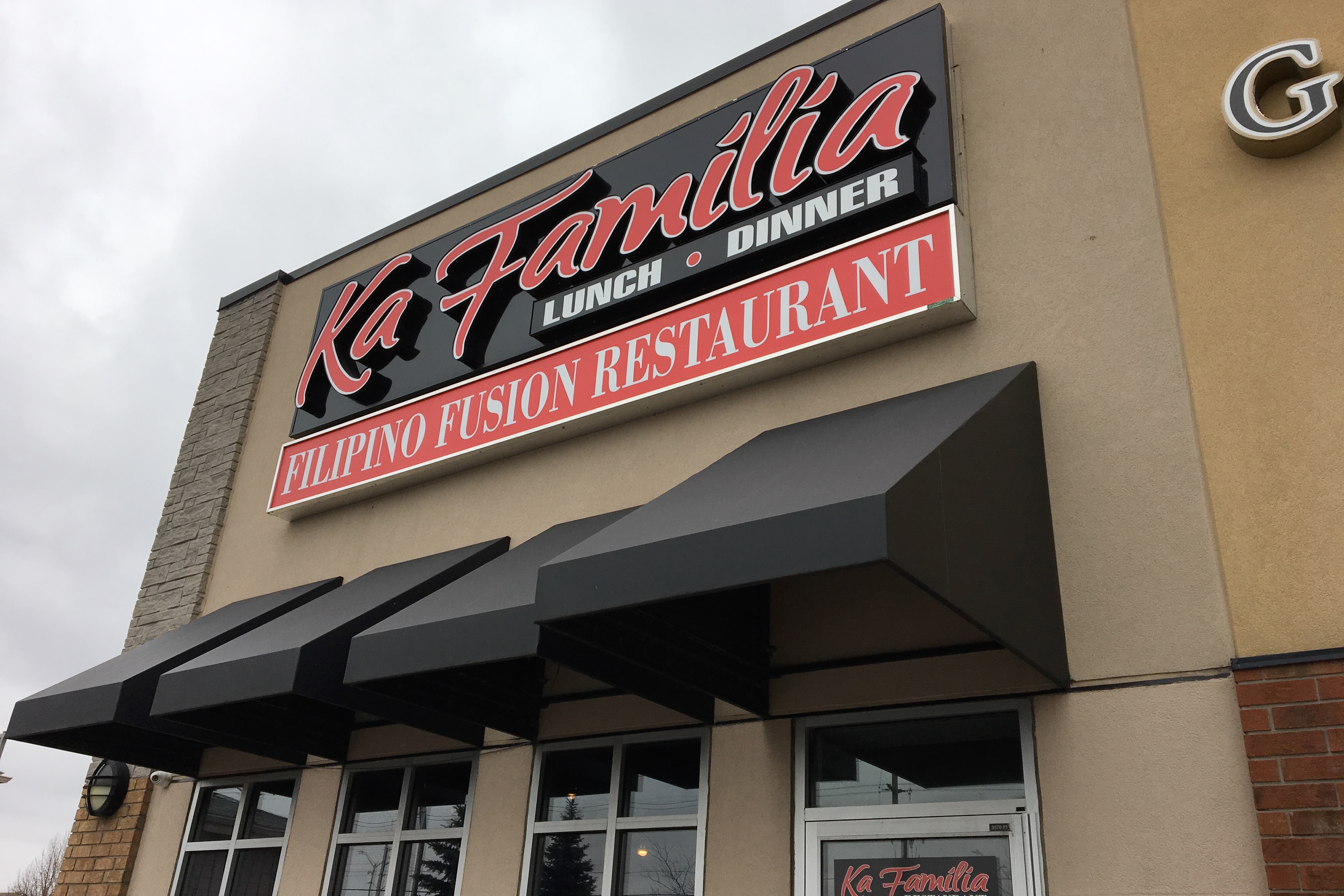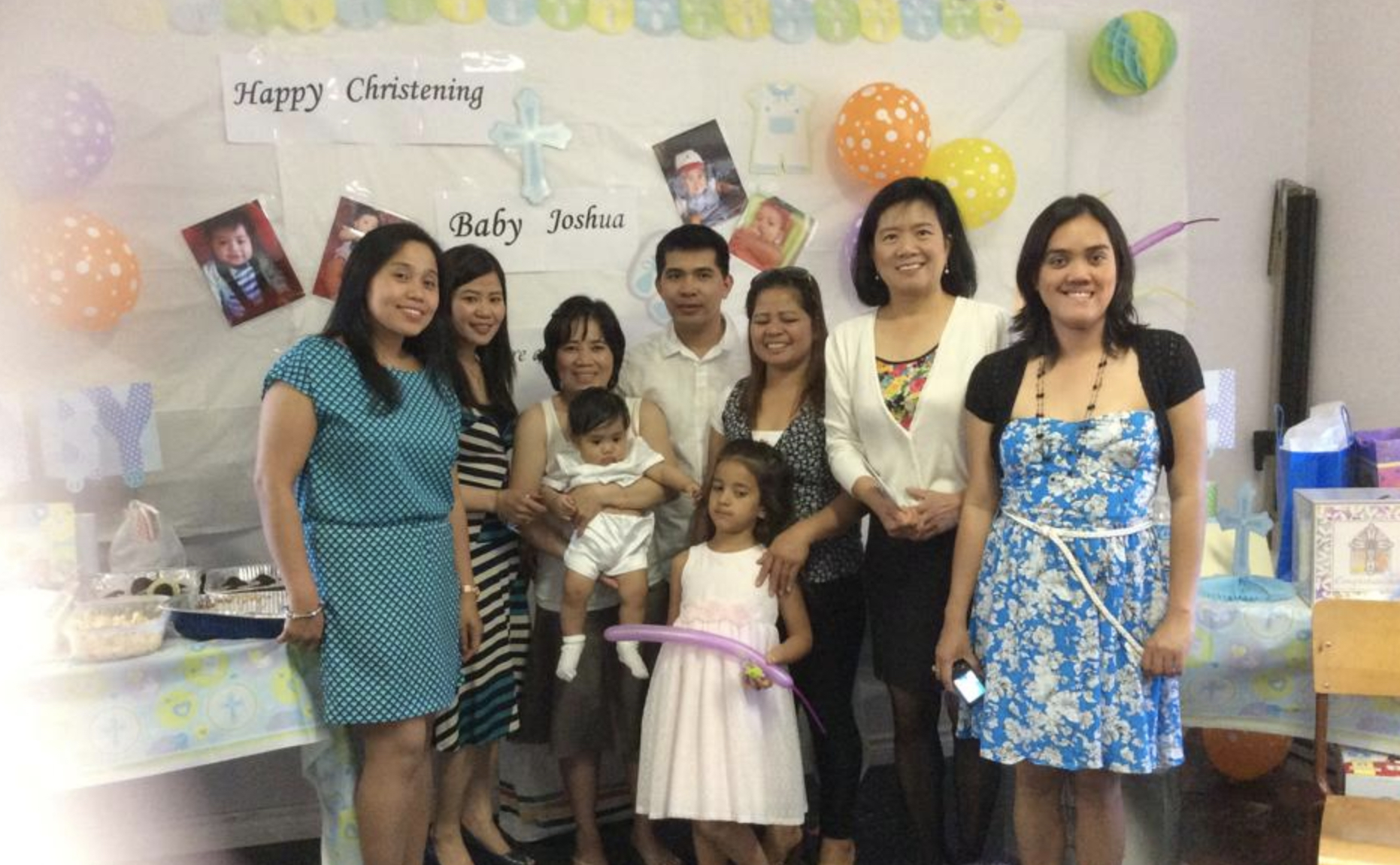
It was a chilly Thursday morning as Dhom Rosete unlocked the doors to his restaurant Ka Familia located in Barrhaven, Ottawa’s west-end neighbourhood. Greeted by a long, fully stocked bar, set tables and a twinkling Christmas tree in the corner, he begins prepping the kitchen for another day at work.
Ka Familia is one of a kind to Ottawa, as there are no other restaurants that specialize in Filipino cuisine, Rosete says. For this very reason, Rosete knew that there was a special place in the city for his business.
The inside of Ka Familia, located at 3570 Strandherd Dr. in Ottawa.
According to an analysis of Statistics Canada’s immigration census tracts, Ottawa’s Filipino population has seen a 20 per cent increase between 2011 and 2016.
Since 2011, Barrhaven’s Filipino population has tripled and is one of the areas with the highest growth in the city.
The interactive map shows the Ottawa census tracts. The dark colours represent the areas with the highest number of Filipinos in 2016. Clicking inside the census tract boundaries produces a pop-up box with the populations for 2011 and 2016, along with the percent change.
Luisa Veronis a social geographer from the University of Ottawa says Canada’s Filipino population has been thriving since 2006. The data indicates that in Canada, the Filipino population has increased by 25 per cent between 2011 and 2016. Veronis adds that large metropolitan areas are “main gateways of entry-point” for immigrants and often reflect the increased migration.
She attributes the growth mostly to the Live-in Caregiver Program, which was offered by the federal government to foreign workers looking for employment as eldercare, childcare or special needs providers. The program closed in November 2014.
Veronis says since the termination, the Liberal government now encourages more economic migration through work permits as the main means of achieving permanent residency and citizenship in Canada.
Rosete was born in the Philippines and immigrated to Ottawa with his family in 2010 from London, England, where he spent over 20 years developing his passion for cooking. After several visits, Rosete says he quickly fell in love with the city and applied for a work permit so he could start his life in Ottawa.
“I was here for your worst weathers, but I love Ottawa. It is the best place I have ever lived in.” Rosete says.
Before opening Ka Familia, Rosete said he did some research and saw that Ottawa’s west-end overall, areas such as Kanata and Nepean, contained large populations of Filipino immigrants.
Barrhaven Coun. Jan Harder said in an email that her ward has seen some of the fastest growth in recent years. She adds, “Barrhaven has developed SO much in five years…The increase in amenities, housing, schooling, shopping are all reasons why people want to live in Barrhaven!”

Although Rosete says there is a thriving Filipino population in Ottawa, he says what lacks is a physical community like what “Preston St. is to Italians” for Filipinos.
He says he sees customers from a variety of backgrounds but adds, “This is the only Filipino restaurant we have, so we should be proud of what we have… But we need the Filipinos to support us.”
Angelle Rudio a Filipino immigrant who has been living in Ottawa for the past 10 years says, “You miss your culture, you miss your food, you miss your language… I want to connect with people so I go to a community where they can relate with me as a person.”
Even though the demand is there, Rosete says, “Over the past seven years, I have seen [Filipino] restaurants open and close. Hopefully I’m not one of them.”




